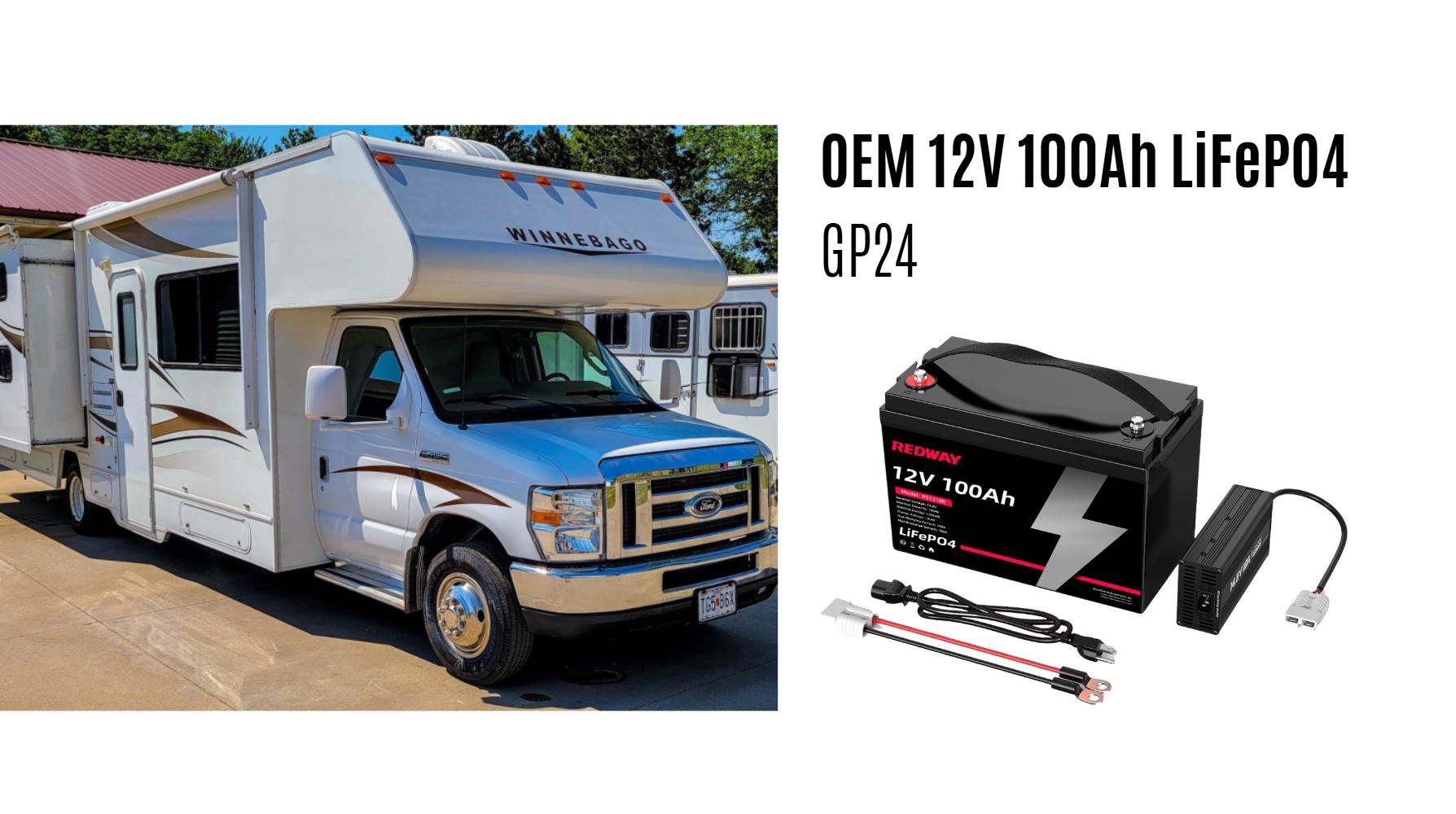The best RV battery for a Winnebago depends on usage needs. Lithium-ion batteries offer longer lifespan and faster charging for frequent travelers, while AGM batteries provide maintenance-free reliability at a lower cost. Flooded lead-acid batteries remain budget-friendly for occasional use. Always match battery capacity to your power requirements and electrical system compatibility.
What Are the Best Battery Types for Winnebago RVs?
Lithium-ion (LiFePO4), AGM, and flooded lead-acid are the primary battery types. Lithium batteries excel in cycle life (3,000-5,000 cycles) and weight efficiency but cost more. AGM batteries balance performance and affordability with 500-700 cycles. Flooded batteries are economical but require maintenance. Choose based on travel frequency, budget, and power demands.
| Battery Type | Cycle Life | Weight (lbs) | Cost Range |
|---|---|---|---|
| Lithium-ion | 3,000-5,000 | 25-35 | $800-$1,500 |
| AGM | 500-700 | 60-75 | $200-$400 |
| Flooded | 300-500 | 70-85 | $100-$250 |
How Do You Maintain an RV Battery for Longevity?
Regularly check electrolyte levels in flooded batteries, keep terminals clean, and avoid deep discharges below 50%. Use a smart charger to prevent overcharging. For lithium batteries, maintain charge between 20%-80% for optimal lifespan. Store batteries at 50% charge in temperature-controlled environments when not in use.
Seasonal users should implement a maintenance calendar: clean terminals monthly during active use, test specific gravity quarterly for flooded batteries, and perform full capacity tests annually. Consider using anti-corrosion sprays on lead terminals and dielectric grease on connections. For lithium systems, update firmware if applicable and calibrate state-of-charge indicators every 6 months. Many modern batteries include Bluetooth monitoring – review voltage trends weekly to catch irregular discharge patterns early.
Can You Upgrade a Winnebago’s Factory-Installed Battery?
Yes, but verify compatibility with your RV’s electrical system. Many Winnebagos use 12V systems, so ensure voltage matches. Lithium batteries often require upgraded charging components. Consult your owner’s manual and consider professional installation for complex upgrades. Battery trays may need modification due to size/weight differences.
What Safety Precautions Apply to RV Battery Use?
Ventilate battery compartments to prevent gas buildup, especially with flooded batteries. Use insulated tools and wear protective gear during maintenance. Install thermal protectors to avoid overheating. Secure batteries to prevent movement while driving. Never expose lithium batteries to temperatures above 140°F or below -4°F.
How Does Temperature Affect RV Battery Performance?
Extreme cold reduces chemical reactivity, decreasing capacity by 20-50% at freezing temps. Heat accelerates corrosion and water loss in flooded batteries. Lithium batteries perform better in cold but require heating pads below -20°C. Always insulate battery compartments and monitor temperature with built-in sensors.
Battery chemistry dictates temperature responses. Flooded batteries lose 1-2% capacity per °F below 80°F, while lithium maintains 95% efficiency down to 32°F. In hot climates, AGM batteries experience 30% faster plate corrosion above 95°F. Solutions include installing compartment fans, using phase-change material insulation, or relocating batteries to climate-controlled areas. Always charge batteries at room temperature – charging a 0°F lithium battery can cause permanent lithium plating damage.
Expert Views
“Winnebago owners often underestimate their power needs,” says Redway’s lead engineer. “We recommend auditing appliance loads before choosing batteries. For lithium systems, prioritize batteries with integrated battery management systems (BMS). Unlike AGM, lithium’s true cost advantage emerges over 5+ years of full-time use through reduced replacement cycles.”
Conclusion
Selecting the optimal RV battery for your Winnebago requires balancing upfront costs, maintenance preferences, and travel habits. Lithium-ion batteries dominate for frequent travelers despite higher initial investment, while AGM remains popular for seasonal users. Regular maintenance and proper charging practices significantly extend battery life across all types.
FAQs
- How long do Winnebago RV batteries last?
- Lithium: 8-12 years. AGM: 4-6 years. Flooded: 3-5 years. Actual lifespan depends on discharge depth, charging habits, and environmental conditions.
- Can I mix old and new RV batteries?
- Never mix batteries of different ages, chemistries, or capacities. Mismatched batteries reduce performance and risk premature failure.
- What size inverter do I need for lithium batteries?
- Match inverter wattage to your peak power needs. A 3000W pure sine wave inverter typically supports most RV systems. Ensure compatibility with lithium’s higher discharge rates.




